- Home
- Simon Winchester
Atlantic Page 10
Atlantic Read online
Page 10
For all the hydrographic surveying that has been done over the years, all the soundings taken and the reefs plotted and the headlands marked, the admirals complain that the current inhabitants of the earth know far too little about their seas, even though oceans cover seven-tenths of their world. This is not for want of trying, however. Europeans especially have been attempting to divine the details of their ocean for the past five hundred years. Ever since Columbus and Vespucci came home, and ever since it became clear that Europeans were inevitably going to trade and fight their way across the Atlantic and all the other seas, there have been great national efforts—in Britain, in Portugal, in Spain, and in time in America and Canada and Brazil and South Africa, too—to survey and chart the waters, to find out the seas’ depths and shallows, their tides and currents, their races and whirlpools and the accurate measure of their coastlines, their islands and their reefs, and all the other features that mark them out so peculiarly. Educating the world about the ocean—with the knowing of Atlantic in the very forefront of the effort—was a venture that got under way as early as the fifteenth century, and it has not stopped for a moment since.
To survey an entire ocean required access to all of its farther limits—access that in the case of the Atlantic was for a long while frustrated by more than a few navigational challenges. The severest limit was the existence of a highly inconvenient sandstone headland known as Cape Bojador—a West African cape that the Arab sailors had feared for centuries and knew as Abu khater or the father of danger.
2. THE ROADBLOCK IN THE WATER
The road into the Sahara south from the old Moroccan seaside fort city of Essaouira happens also to be the main trunk Atlantic coast road into West Africa—it passes on to Mauritania, and then to Senegal, the Gambia, Guinea-Bissau . . . With careful planning, good fortune, decent springs in your car, and a fair amount of time, a determined driver could make it to Cape Town, arriving in time for tea under the jacarandas at the Mount Nelson Hotel.
For most of its early miles, the journey has a steady tedium. After the spectacle of the Atlas Mountains dipping into the sea to which they gave their name, and after passing through the tiny Spanish enclave of Ifni, and after seeing the chains of great French-built lighthouses and the surfers carelessly riding the rollers thundering in from the sea, you drive inland for a few miles and the road becomes flat. The groves of argan-oil trees and goat-busy scrub eventually give way to the stony desert plains of the hammada, and there is a dreary little junction town called Goulmime, where the desert proper begins.
Beyond the dust and chaos of its medina—with blue-robed Touareg still to be seen, and desert-weary cameleers bringing trade goods for the souks—the two-lane highway, oil-dark against the sands of the hammada, winds empty over the horizon, with just the occasional tanker truck whooshing past, and fleets of rickety Mercedes taxis traveling too fast for their own good. The sea rumbles endless to the west, and there is the glint of the high ergs of the Sahara far to the east. The east wind constantly whistles, leaving grit in one’s hair and teeth. This until lately was the entranceway to Spanish territory, and one sees it in the landscape and the feel of the place. The north of Morocco possesses a certain silky plenitude, whereas this more southerly corner of the place has a harshness: dry, dusty, and stained with oil.
The towns are far apart, and generally worth stopping at only for fuel—though one of them has a monument to Antoine de St.-Exupéry, memorializing his time as a pony express pilot for the 1930s coast airmail service between Toulouse and Dakar; and there are plenty of fishermen’s huts where one can find grouper, swordfish, and sardine, plucked from the sea and grilled over driftwood fires. The coastline itself becomes more interesting, too. Near Tarfaya it turns abruptly out to sea, a fifty-mile change of direction jutting into the ocean and into which, over the years, scores of vessels with captains sleeping, stupid, or drunk have plowed: there are wrecks of fishing boats sitting high and dry and majestic on the rocks, all being slowly chewed away into nothing by the ever-digesting surf.
The seas here have a particular reputation for peril. From high up on the hills above this headland’s terminal point, Cape Juby, it is just possible to make out the closest of the Canary Islands, Fuerteventura. Until the ever-gnawing seas did their work, a famous shipwreck also lay here: the great transatlantic star of the fifties, the Virginia-built liner SS America, broke loose in a storm while being towed to Thailand in 1994 to be turned into a floating hotel. She now lies almost wholly sunk a hundred yards off a Fuerteventura bathing beach, a forlorn memorial to the brief greatness of America’s merchant marine.
• • •
It is indeed coastal danger that is most memorable along this stretch of the African shore. At latitude 27 north, some 150 miles south of the wrecks of Cape Juby, there rises a long, low headland, extremely undistinguished in appearance. This is a headland that remains hugely important in the history of Atlantic navigation, though in reality it is disappointingly not at all like those other famous Atlantic capes—Finisterre, Horn, Good Hope, Farewell, St. Vincent, Race—that are the stuff of great poetry and legend. This, more modest in its majesty and its menace, is Cape Bojador.
Though the Portuguese word bojador hints at “protrusion,” the land that makes up this low hurdle of cliffs is not a protrusion at all; nor does it pose anything but the smallest inconvenience to a vessel passing south along the African coast. But for many centuries no sailing vessel ever dared to pass it, nor was one physically able to do so. Quem quer passar além do Bojador, Tem que passar além da dor, wrote the modern Portuguese poet Fernando Pessoa. He who wants to pass beyond Bojador, must also pass beyond pain.
Beyond it lay a totally unknown sea—a terror-inspiring, monster-filled wilderness known in all ports as the Green Sea of Darkness.
Until the fifteenth century, no sailor—whether Spaniard, Portuguese, or Venetian, whether Dane or Phoenician, and by all existing accounts no African sailors, either—had ever successfully rounded Cape Bojador from the Atlantic Ocean side. All the early navigational academies of Europe regarded the sea beyond Bojador as quite impassable. Its very existence stands as one of the reasons why the central Atlantic Ocean, despite having almost certainly the world’s most populous shores, was the last of the great seas to be properly navigated. Polynesian navigators had long before crisscrossed the Pacific; Persians and Gulf Arab sailors had taken their reed-and-creosote sailing craft across upper parts of the Indian Ocean; Chinese sailors knew the intricacies of the eastern Indian Ocean and their various littoral seas; and the Vikings knew the navigational complexities of the far north. But traditional navigation seemed not to work so well or so speedily in the Atlantic as it did elsewhere, and Cape Bojador, so far as the literature records, was one of the reasons why.
The problem with Bojador was created by a unique combination of circumstances—topographic, climatic, and marine. No hint of impending difficulty would be apparent to a southbound sailor, who would perhaps leave from an Iberian port, head past the Strait of Gibraltar with light winds still favorably on his starboard quarter, and dip steadily along the African coast at a comfortable five or six knots. He would mark his passage each day by the sight of the three obvious Moroccan capes: Rhir, Draa, and Juby. He would see the twinkling fires of the settlements of Casablanca, Essaouira, and El Ayoun, taking comfort from their proximity—for like most in those early days he was probably a nervous sailor, and would always be most reluctant to leave the sight of shore, finding a degree of security in his crabwise progress along the edge of land.
And then he would come to Bojador—and in an instant his illusion of comfort would evaporate. An unseen sandbar, stretching twenty miles out from the low cape and reducing the depth under his keel to a mere couple of fathoms, would first compel him to turn to starboard and, against his better judgment, head out into the deep ocean. At the same time the telltales on his mainmast would show that the slow winds off Morocco had suddenly changed to full easterly, and may well ha
ve picked up to a steady half gale. (For most of the year the winds veer east just at this point, and modern satellite pictures will show trails of desert sand being wafted each summer out across the Atlantic.20) And third, once clear of the submerged point, a current—the North Equatorial Current—would catch his vessel in its powerful maw and begin to drag it westward, too, for possibly as much as six hundred miles.
The perils of the cape are actually even more conspiratorial than this. For most of the voyage down along the coast a persistent southbound current, called by the Portuguese mariners the Guinea Current (modern mariners call it the Canary Current), helped sailors of old to scurry along the shore, providing only that they kept close to land. This was important, because one characteristic of the Guinea Current was that it became steadily weaker the farther offshore. This then gave a ship’s master two equally unpalatable options: remain close inshore and risk being swept into the irresistible arms of the westbound equatorial stream, or sail well away from land and encounter only a fading current and weak winds, and remain motionless at sea, with food and water running out, the vessel trapped in doldrums of your own making.
Small wonder not a single seaman managed to get past the cape—until a seminal moment, seventy years before Vespucci, in 1434. It was the growing intelligent acquaintance with the complexities of the sea that eventually allowed the Bojador problem to be solved—as the early phase of exploration of the Atlantic steadily gave way to a period of rigorous ocean education. To know the sea became the working phrase, for only by knowing it could its dangers be avoided and its treasures exploited. The Cape Bojador story is a classic example of this shift in attitude.
It was a young Portuguese navigator named Gil Eannes who is commonly credited with having the maritime intelligence and feel for the sea so necessary for blazing a southbound trail. Though most of the papers relating to his voyage were lost in the Lisbon earthquake three centuries later, sufficient anecdotal evidence remains to hint at just how he did it. It was entirely a matter of intelligence: of using such intellectual techniques as observation, forethought, timing, planning, and calculation.
Prior to Eannes, sailors merely set themselves a goal (or had it set it for them by their financial sponsors), victualed their ship, and set off—and in the case of their West African ventures, all were forced to turn back after little more than a thousand miles. These sailors employed the rituals of old—they followed the currents, they sailed before the winds, they followed the paths of seabirds. But what Gil Eannes did next involved an immense amount of planning, and it invoked the growing science of celestial navigation, already known to the Arab merchants after diffusing slowly from the East, where it had already evolved to a fine degree under the Chinese.
Eannes believed it would be possible now to move through the Atlantic and reach places unfavored by winds and currents and migrating birds if a mariner used the new tools fast becoming available: astronomy, timekeeping, a sophisticated knowledge of weather and climatic history, and the geography of the sea. To get around Cape Bojador specifically, or to double it, in seamen’s jargon, involved the scrupulous measuring of the water speeds and directions, and the measuring in detail of the average directions and strengths of the winds. It involved the development of a technique now known as current sailing. Eannes also drew current triangles onto his crude but ever-improving charts sets, and used vectors, intelligent tacking, and careful, hour-by-hour timing. Once he knew the currents and the winds, their directions and their speeds, it remained a matter of simple trigonometry to plot a course that would take advantage of them both. However, his planning also involved choosing a season when the winds of one kind would be blowing while those of another would not.
Only after all that information had been digested and calculated and factored in could Eannes set his rudder and trim his sails and point his bowsprit in a direction that might have seemed to his unsuccessful predecessors eccentric—but eccentric in the way that modern Great Circle routes seem oddly counterintuitive when compared with the apparent directional simplicity of a voyage made along a straight line of constant bearing, in other words a rhumb line or loxodrome.
The precise details of his famous voyage remain unclear—there was no surviving diary, no ship’s log, not even the name of the ship is recorded. All we know is that Eannes went south on the explicit orders of Henry the Navigator, the princely architect of Portugal’s imperial ambitions. Henry had drily remarked that fourteen previous attempts to double the cape had failed. Eannes, who was no more than one of the personal servants in Henry’s court, might just as well make an attempt, too.
He did precisely as he was ordered—he sailed southwest to Madeira and the Canaries, then performed all his complicated arithmetical elaborations. He initiated a deep-sea twisting-and-turning voyage that has been known for many years since as the Portuguese volta, and by doing so succeeded finally in rounding the dreaded cape. He was then blown by the gusts of a harmattan wind onto the African desert coast some thirty miles south of Bojador and picked a sample of the woody desert plant known as St. Mary’s flower or the rose of Jericho to bring back as proof. It didn’t work: none of this convinced the skeptical prince Henry, who promptly ordered Gil Eannes to go out to sea once again.
So back he went the following year, 1435, this time with a companion—a man who was also a household servant, though a spare-time sailor—and they took their puny fishing barca on almost the exact same plotted route, with its wide westerly diversion south of the Canary Islands. The men landed at almost the same African coastal spot, they named a river, they saw the footprints of men and the hoofprints of camels, and thus realized that the Torrid Zone was peopled, and they came back to a finally credulous Henry the Navigator, and in consequence to a brief period of court rapture followed by a lengthy period of public obscurity.21
And the two ventures did the necessary trick. Within months other expeditions had set out from the Portuguese harbors, and they fanned out along the at-long-last-accessible coast of Africa to explore it, round it, and then eventually to head off east beyond the continent of Africa, to the great treasure grounds of the Indies.
The ships grew steadily in size—from the tiny barcas used by Eannes, to the three- and four-masted caravels, and the gigantic naos employed on the spice runs of the sixteenth century. The equipment carried on the ships’ bridges became more sophisticated: the astrolabe was soon to be invented, the compass to be employed, sounding wires to be made long enough to deal with exceedingly deep waters, and tide tables and sight reduction tables to be published.
The mariners became ever more adventurous, and history is littered with their names: Bartholomew Diaz, who first rounded the Cape of Storms; Vasco da Gama, who first went to India; Pedro Cabral, the first to land in Brazil; Alfonso d’Albuquerque, first in Malabar, Ceylon, and Malacca; and all those other sailors whose names—Fernando Póo, Tristan da Cunha, Luis vaz de Torres—are memorialized in islands or straits (or as these three are remembered, for a slaving colony off Africa, a dangerous volcano in the far South Atlantic, and a narrow passage between New Guinea and the northern tip of Australia). Perhaps greatest of them all, though claimed by others, was Fernão de Magalhães, the would-be circumnavigator who was born in Portugal but sailed for Spain, and died as Ferdinand Magellan in the Philippines in 1521. All of these indefatigable sailors and a score more—who mostly came from a Portugal of which it used to be said such a tiny land to live in, but the whole world to die in—came to be legatees of the pioneering sailing techniques of Gil Eannes. They followed in his wake, both literally and figuratively, to begin the organized acquisition of knowledge about the Atlantic and all the other oceans besides.
Atlantic Ocean: Routes of Explorers and Settlers
3. MOVING THE WATERS
It has to be remembered that until Amerigo Vespucci, there was no knowledge—nor even a suspicion or a hint—that the Atlantic was a separate sea. Culturally, this was an ocean that until the end of the fifteenth century was
not known to exist. Then, and at a stroke, with Vespucci’s voyage, the Atlantic Ocean was born; suddenly it was there.
With this realization of a brand-new sea, anchors were weighed and sails unfurled, brass clocks were wound and heaving lines leaded. Scientists were appointed and chartmakers assigned, and bold and fearless skippers in their legions took their little ships out of port and headed off to measure and to mark this new body of water.
At the edges of a sea, it is the daily tides that prove the most obvious features to measure and record. Out in the deeps beyond, beyond the influence of tides, the seaman must look for other things: for the size of waves and the direction of swells, the tenor of storms, the press of fish and birds, the depths beneath the bow. And most important, the unexpected and initially mysterious ways that the waters appear to move.
Since these motions are among the most clearly influential on the passage of any ship—as Gil Eannes experienced off Cape Bojador and then made use of—they were noticed very early on in the exploration of the Atlantic. They seemed like great underwater rivers, or torrents. Currents—from the French, things that run—were the first of the ocean’s many unseen features to become properly known. And perhaps no stream was more famously so than that immense rushing extension of the North Equatorial Current known, from Florida, where it begins, to the west of Scotland, where it ends (with palm trees growing beside the waters that it so conveniently warms), as the Gulf Stream.
Like many mariners around the world, Columbus noticed the currents—and here the exceptionally strong currents that seemed to him so unusually prevalent in Caribbean Atlantic waters. “I found the sea ran so strangely to the westward,” he wrote in the log of his third voyage, describing his passing through the notorious Dragon’s Mouth, between Trinidad and the Venezuelan mainland, “that between the hour of Mass, when I weighed anchor, and the hour of Complines, I made sixty-five leagues of four miles each with gentle winds. . . .” There are also accounts by Peter Martyr, the Spanish court historian who, coincidentally, was among the first to recognize the huge potential importance of the Gulf Stream, of a vain attempt by Columbus to take a sounding off the coast of Honduras, only to have the “contrary violence of the waters” force his lead upward and never once allow it to touch bottom.

 The Surgeon of Crowthorne
The Surgeon of Crowthorne Korea: A Walk Through the Land of Miracles
Korea: A Walk Through the Land of Miracles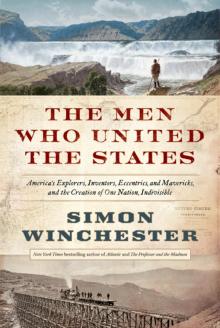 The Men Who United the States: America's Explorers
The Men Who United the States: America's Explorers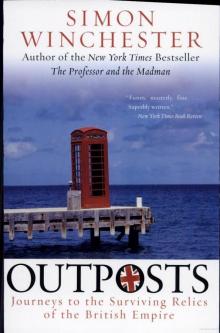 Outposts: Journeys to the Surviving Relics of the British Empire
Outposts: Journeys to the Surviving Relics of the British Empire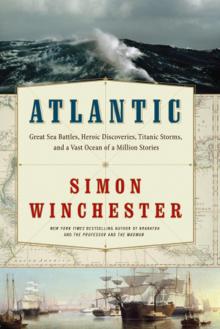 Atlantic: Great Sea Battles, Heroic Discoveries, Titanic Storms
Atlantic: Great Sea Battles, Heroic Discoveries, Titanic Storms The Professor and the Madman: A Tale of Murder, Insanity
The Professor and the Madman: A Tale of Murder, Insanity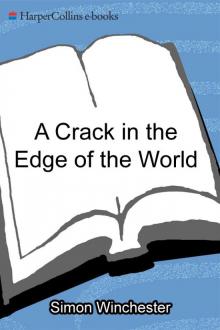 A Crack in the Edge of the World
A Crack in the Edge of the World The Perfectionists: How Precision Engineers Created the Modern World
The Perfectionists: How Precision Engineers Created the Modern World The Man Who Loved China: The Fantastic Story of the Eccentric Scientist
The Man Who Loved China: The Fantastic Story of the Eccentric Scientist The River at the Center of the World: A Journey Up the Yangtze
The River at the Center of the World: A Journey Up the Yangtze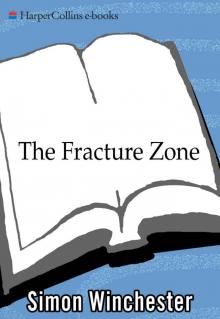 The Fracture Zone: My Return to the Balkans
The Fracture Zone: My Return to the Balkans The Map That Changed the World
The Map That Changed the World Krakatoa: The Day the World Exploded
Krakatoa: The Day the World Exploded The Man Who Loved China
The Man Who Loved China The River at the Centre of the World
The River at the Centre of the World Bomb, Book and Compass
Bomb, Book and Compass The Perfectionists
The Perfectionists The Meaning of Everything
The Meaning of Everything Exactly
Exactly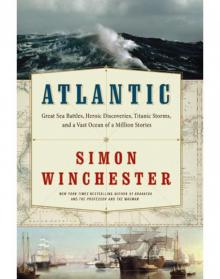 Atlantic
Atlantic Korea
Korea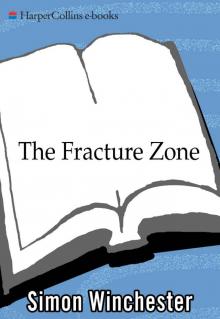 The Fracture Zone
The Fracture Zone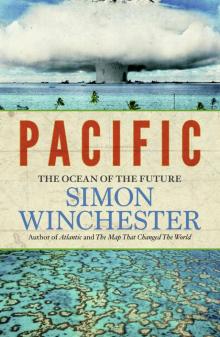 Pacific
Pacific Krakatoa
Krakatoa The Professor and the Madman
The Professor and the Madman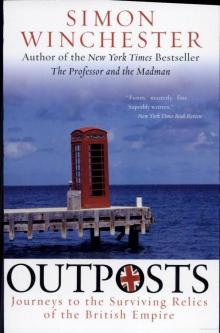 Outposts
Outposts